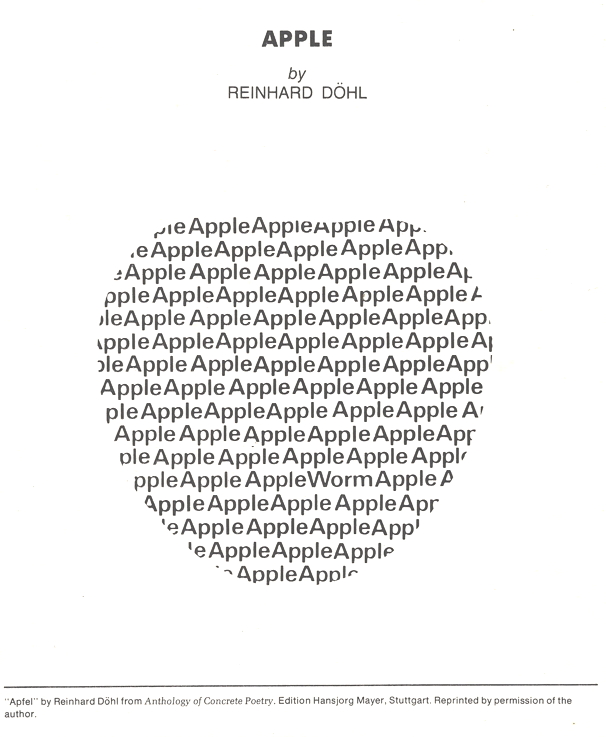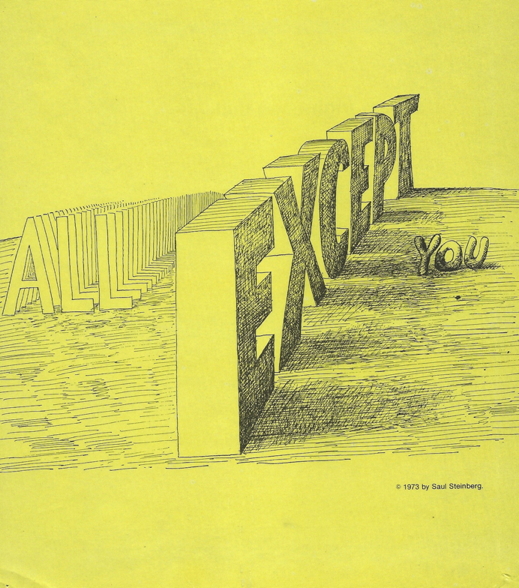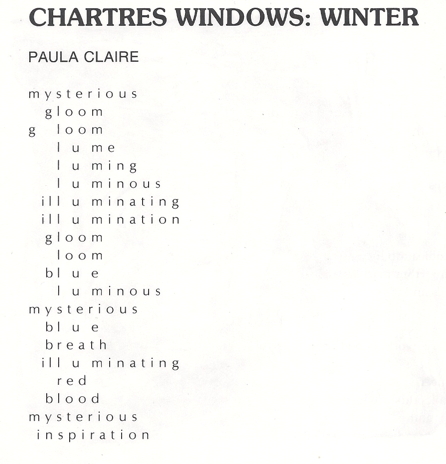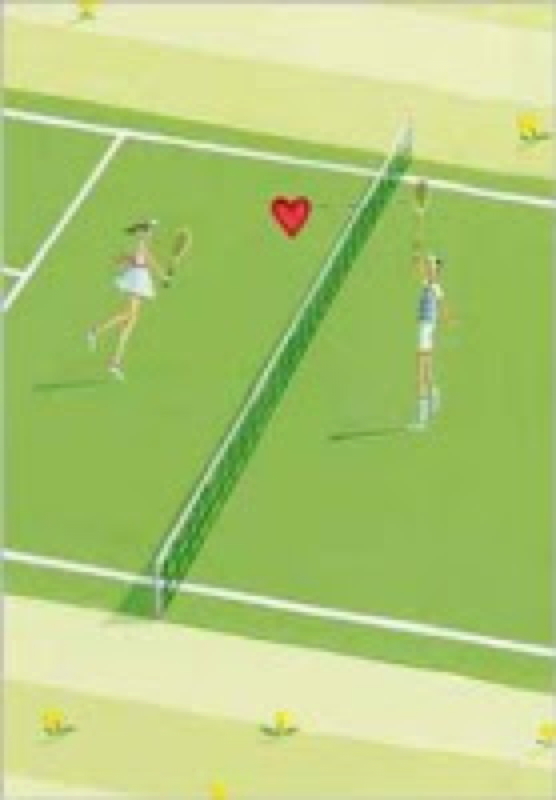|
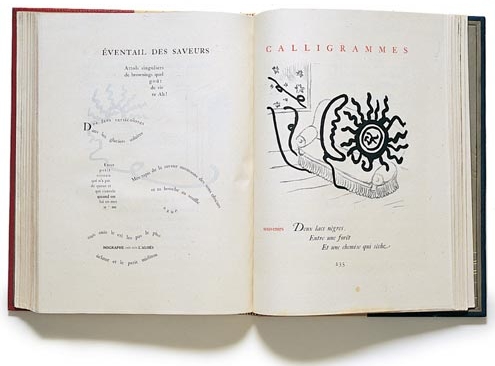 Day 10 Concrete Poetry (Calligrams) Day 10 Concrete Poetry (Calligrams)
Concrete poetry is sometimes called picture
poetry or shape poetry. It combines poetic writing and drawing.
The form that the poem is written in mirrors the topic of the
poem. There are three traditional ways this is down: (1) the
poem can follow the outline of the object, (2) the poem can fill
a shape that is the subject of the poem, or (3) the poem can
use the way words are written on the page to form an image.
Calligrams are typographic poems. In 1918 French poet Guillaume
Apollinaire published a book of poems that did not look like
poems. He named the book Calligrammes which means “beautiful
writing.” He used words and lines to form his poems. Sometimes
the shape related to the subject of the poem. But actually
the calligram style of poem was written before then. It was called
“shaped poetry” or “pattern poetry.”
English poet George Herbert wrote two famous shaped poems, “Easter
Wings” and “The Altar.” The mouse-tale in Lewis
Carroll’s Alice’s Adventure in Wonderland might be considered
a shaped poem.
Visual poetry takes many forms, simple
graphic designs, poems actually formed from letters and words,
and even animated or flash poems. Check out “42 Clever Calligrams That Visualize the Meanings of Various Words”.
|
Easter Wings by George Herbert
Lord, Who createdst man in wealth
and store,
Though foolishly he lost the same,
Decaying more and more,
Till he became
Most poore:
With Thee
O let me rise,
As larks, harmoniously,
And sing this day Thy victories:
Then shall the fall further the flight in me.
My tender age in sorrow did beginne;
And still with sicknesses and shame
Thou didst so punish sinne,
That I became
Most thinne.
With Thee
Let me combine,
And feel this day Thy victorie;
For, if I imp my wing on Thine,
Affliction shall advance the flight in me
m
|
|
|
|
|
| |
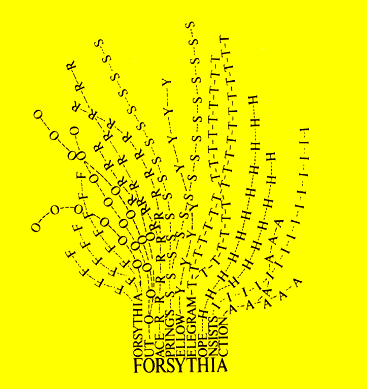
Forsythia by Mary Ellen Solt
|
|
| |
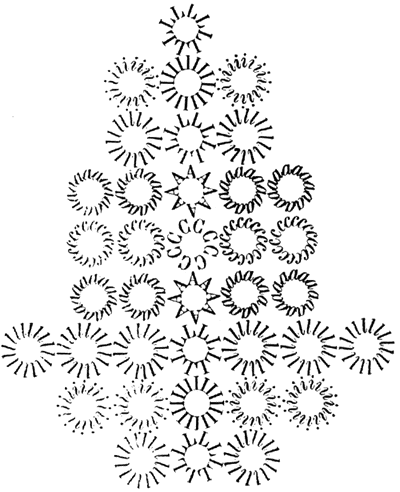
Lilac by Mary Ellen Solt
|
|
| |
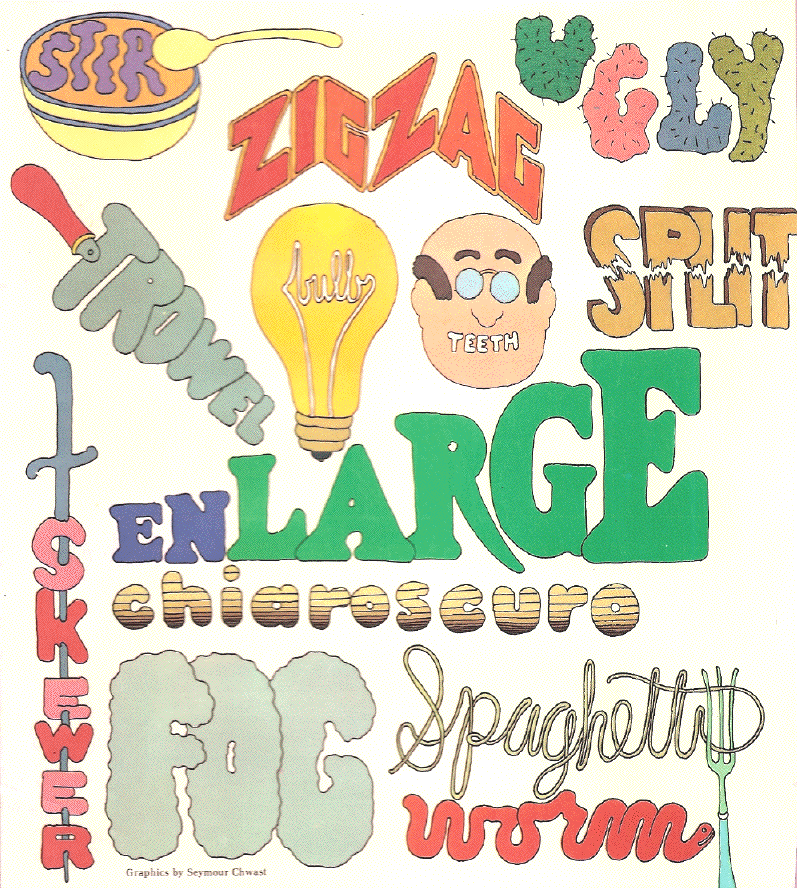
Graphics by Seymour Chwasi
|
|
| |
|
|
| |
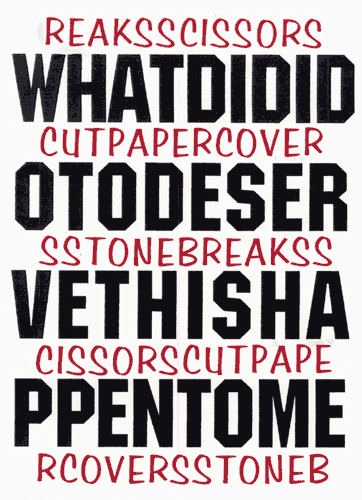
by Irving Weiss
|
|
| |
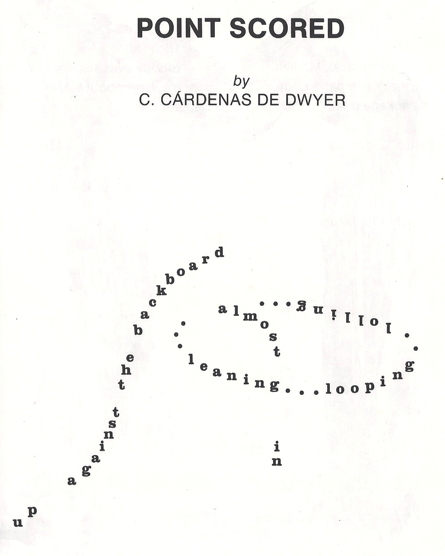 m
m
|
|
| |
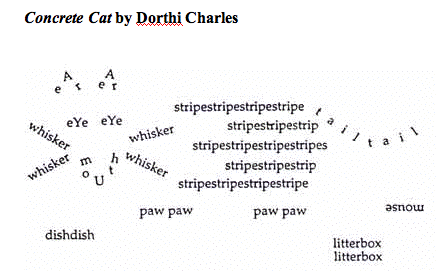
m
|
|
| |
|
|
| |
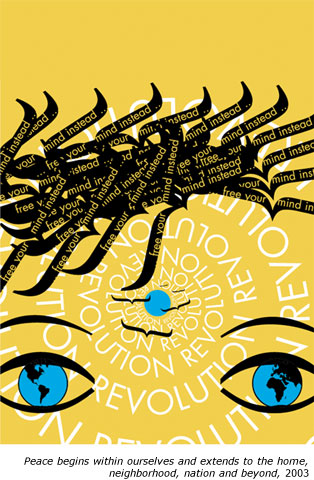
More by Laura Ruggueri
|
|
| |
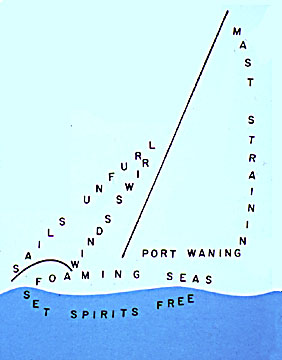
Sailboat by Court Smith
|
|
| |
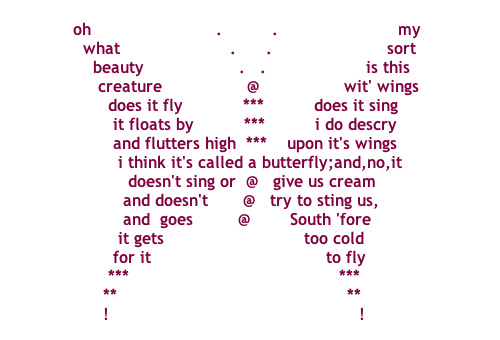
Butterfly by David Schondelmeyer
|
|
| |
|
|
| |
|
|
| |
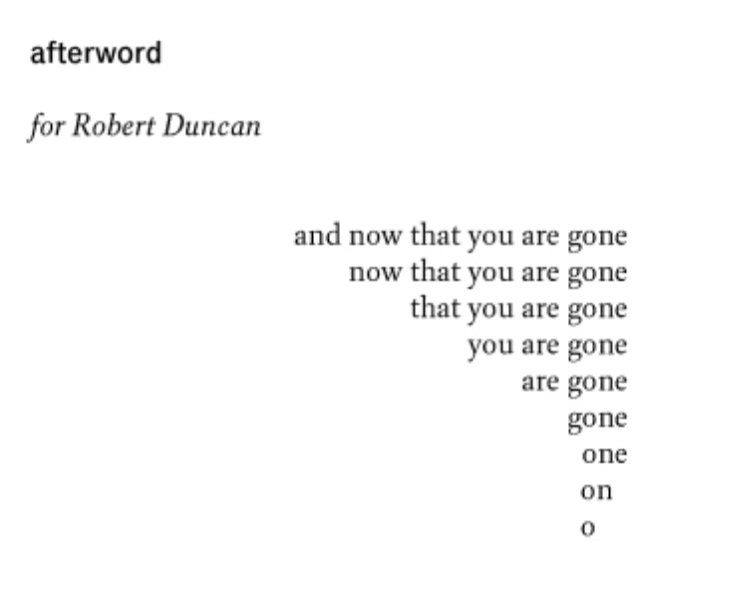
Afterword by B P Nichol
|
|
| |
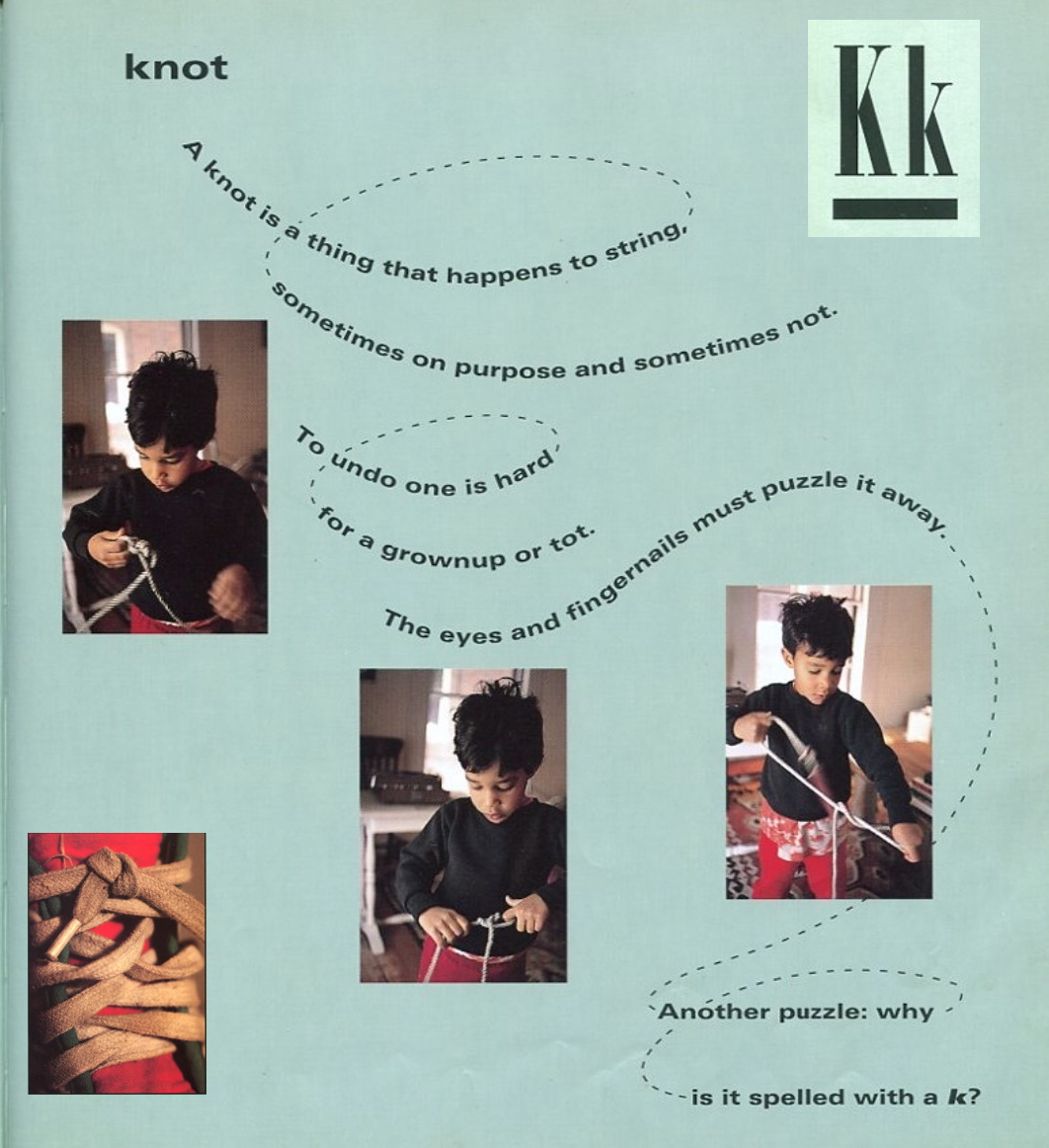
Knot by John Updike
|
|
| |
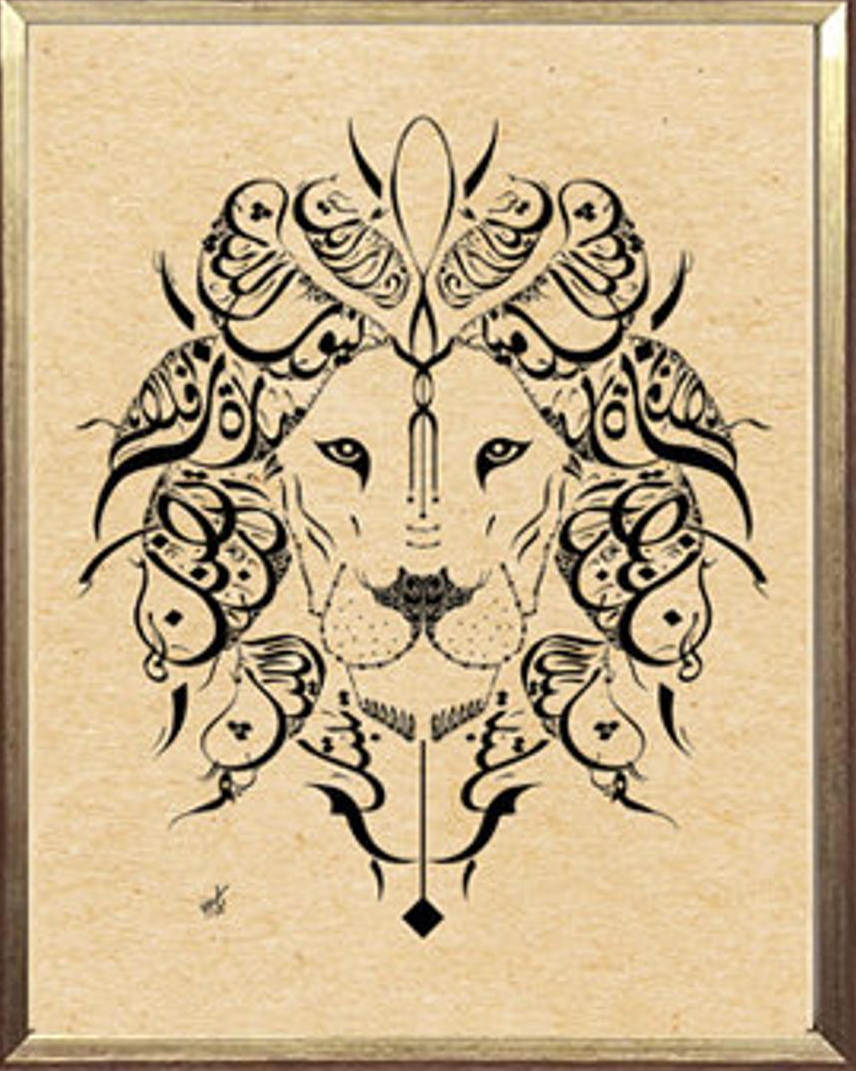
Lion by Al-Mutanabbi

Islamic custom does not forbid representational art, but drawings of humans and animals have been discouraged. For example, you will not see traditional paintings and drawings in a mosque. Arabic calligraphy manages to transcend that restriction by creating images from letters, often working scripture or poetry into the design. The drawing above uses a well-known poem, “Lion” by Al-Mutanabbi: “If you see the lion bare / show its teeth, do not assume the lion is smiling at you.” |
|
| |
Social Distancing by Juan Felipe Herrer
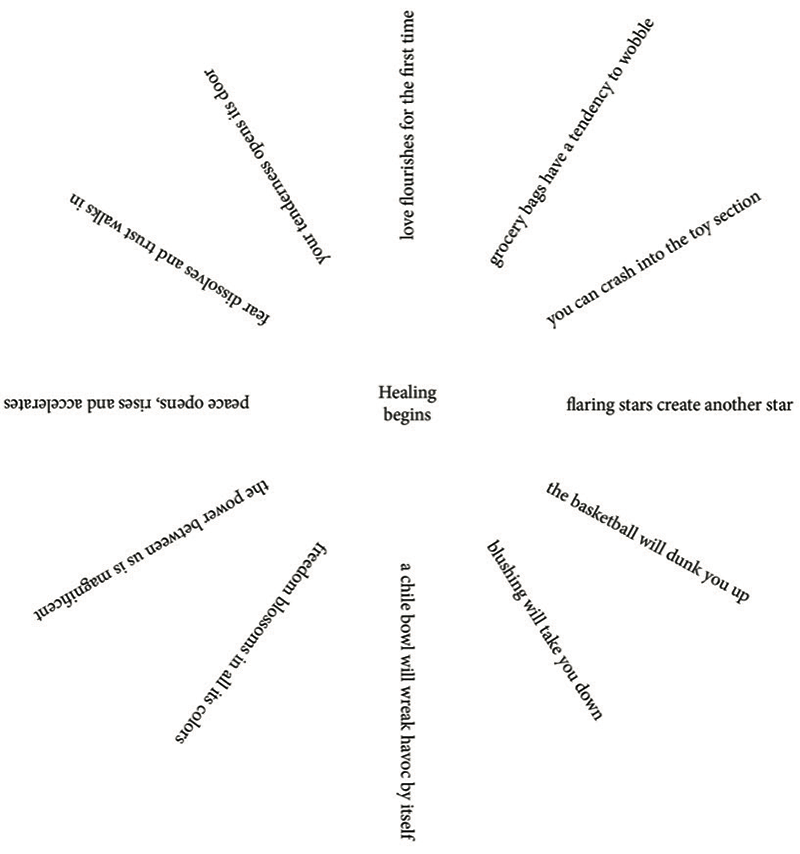
In light of the COVID-19 pandemic, this take on the concrete poem is multi-faceted. Start reading wherever you think best.
|
|
Download a handout which includes additional examples
such as “Suppose Columbus” by Charles Suhor, “400-Meter Freestyle” by Maxime
Kumin, “The Mouse’s Tale” by Lewis Carroll, and “Seal” by William Jay Smith, as well as directions for students
to create calligrams in Microsort WordArt.
Your Turn: Now you get to try your hand at writing a concrete / visual
poem of your own. You may choose either of the three approaches.
Be prepared to present your poem in class.
|
 Day 10 Concrete Poetry (Calligrams)
Day 10 Concrete Poetry (Calligrams)